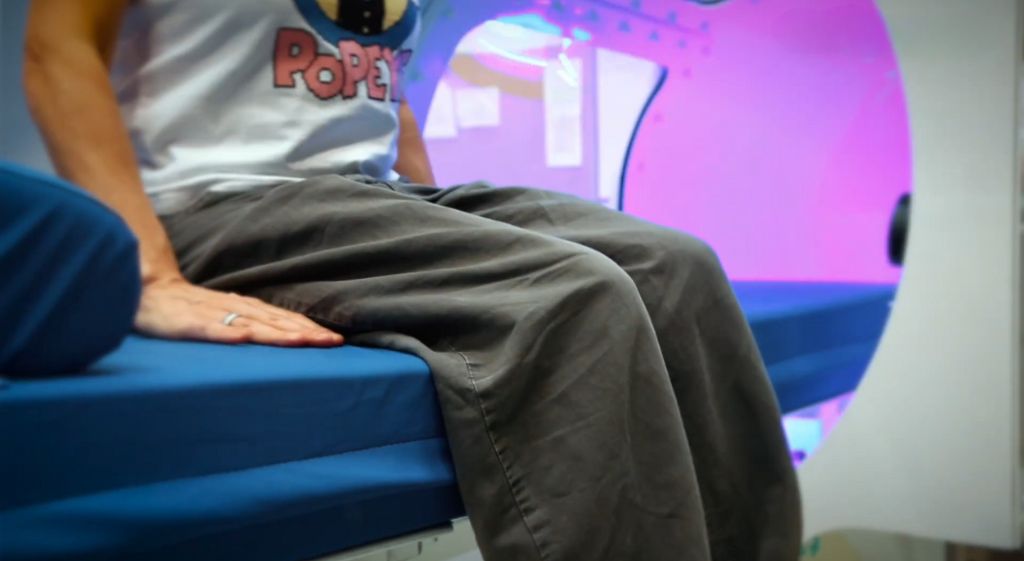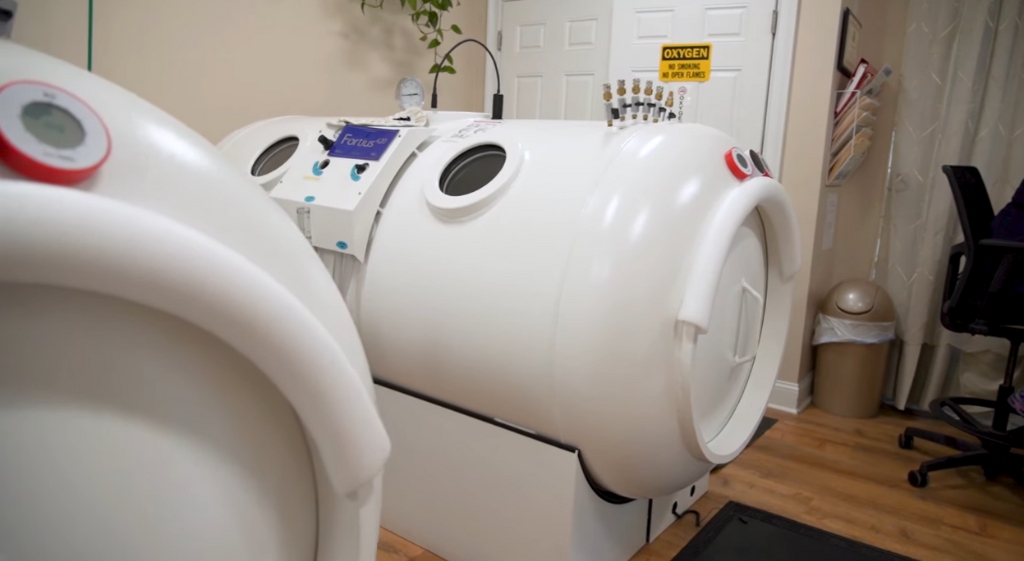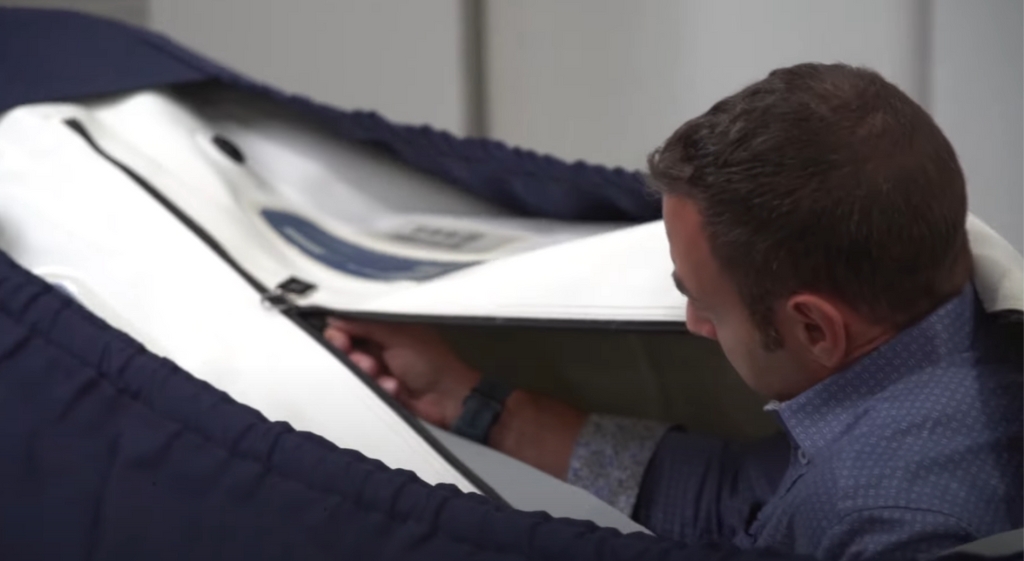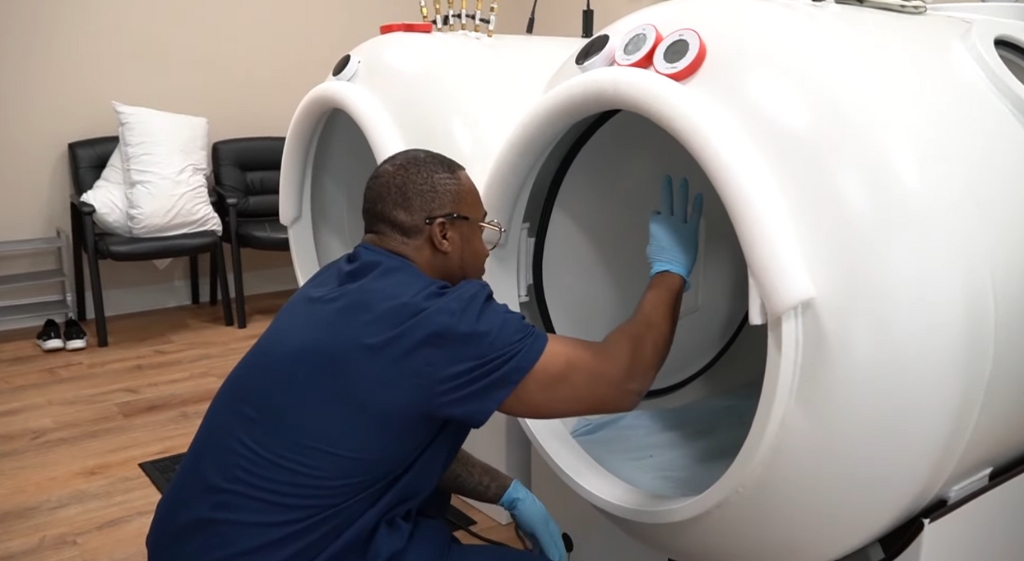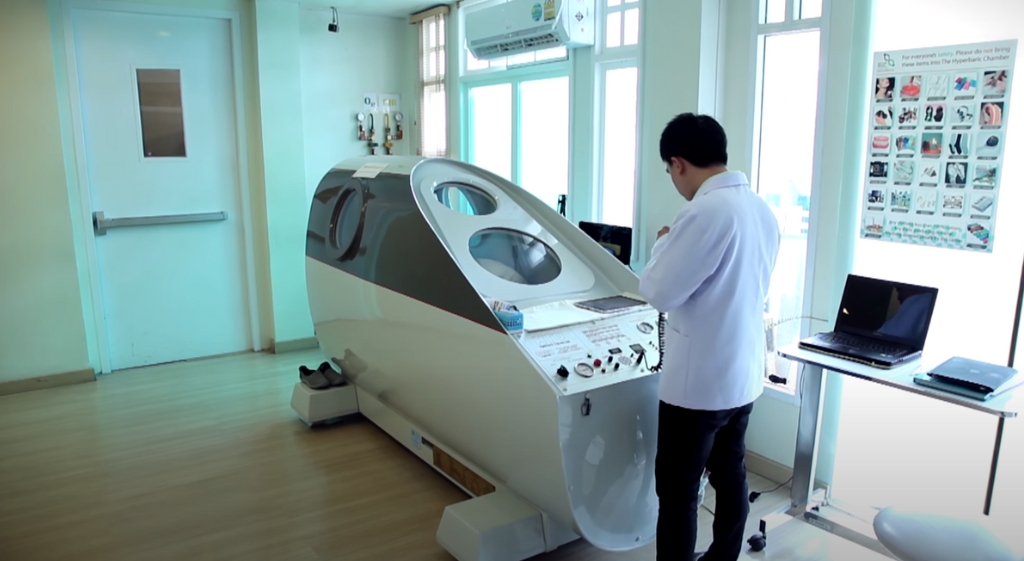Hyperbaric Oxygen Therapy (HBOT) and its gentler counterpart, Mild Hyperbaric Oxygen Therapy (mHBOT), are intriguing medical treatments that harness the power of oxygen under increased atmospheric pressure.
Although they share a common foundation, HBOT and mHBOT differ significantly in aspects like pressure intensity, medical uses, and ease of access. In this guide, we’ll break down these key differences, explaining how each therapy functions and determining who can benefit the most from them.
The Fundamentals of Hyperbaric Oxygen Therapy (HBOT)
Hyperbaric Oxygen Therapy (HBOT) is a recognized medical treatment involving the inhalation of pure oxygen in a pressurized environment, typically a room or chamber.
The Mechanism and Application of HBOT
Hyperbaric Oxygen Therapy operates by increasing the atmospheric pressure within the chamber, typically to two to three times the normal air pressure. Patients breathe 100% oxygen, significantly boosting the amount of oxygen in the blood.
This increased oxygen level promotes healing, fights infection, and stimulates the release of growth factors and stem cells.
Common applications of HBOT include treating decompression sickness, serious infections, bubbles of air in blood vessels, and wounds that won’t heal as a result of diabetes or radiation injury.
In the context of home-based treatments, Hyperbaric Oxygen Therapy (HBOT) has evolved to become more user-friendly and accessible. For those interested in exploring state-of-the-art HBOT solutions for home use, which are designed to enhance natural recovery and improve overall wellness, visit here.
The Scientific Backing and Clinical Evidence
The effectiveness of HBOT is backed by extensive clinical research. Numerous studies have demonstrated its efficacy in enhancing wound healing, particularly in diabetic foot ulcers, improving outcomes in radiation injury, and assisting in the recovery from certain types of infections.
Mild Hyperbaric Oxygen Therapy (mHBOT): A Different Approach
Mild Hyperbaric Oxygen Therapy (mHBOT) is a variation of traditional HBOT but at a lower pressure. It typically involves pressures up to 1.3 atmospheres, which is significantly less than standard HBOT.
How mHBOT Works and Its Uses
mHBOT operates under the same principle as HBOT – enhancing oxygen delivery to tissues. However, due to its lower pressure, the increase in oxygen is less dramatic. mHBOT is often used for general wellness, sports recovery, and some chronic conditions.
The Research and Evidence Behind mHBOT
While mHBOT is less extensively studied than HBOT, some research suggests its effectiveness in various conditions. It’s particularly noted for its potential to enhance recovery from athletic exertion and improve quality of life in certain chronic conditions.
Comparing HBOT and mHBOT: Key Differences
Pressure Levels and Oxygen Concentration
One of the primary differences between HBOT and mHBOT lies in the pressure levels used. Hyperbaric Oxygen Therapy typically involves pressures between 2 to 3 atmospheres, while mHBOT uses up to 1.3 atmospheres.
This difference in pressure affects the concentration of oxygen absorbed into the bloodstream.
Medical Indications and Accessibility
Hyperbaric Oxygen Therapy is generally used for more severe medical conditions and often requires a prescription and supervision by medical professionals.
In contrast, mHBOT is more accessible, often used for wellness and recovery purposes, and may not always require medical supervision.
Safety, Side Effects, and Contraindications
Both HBOT and mHBOT are generally considered safe, but they do have some associated risks and side effects. The risk profile of Hyperbaric Oxygen Therapy is more significant due to the higher pressures used.
Clinical Perspectives on HBOT and mHBOT
Healthcare Professionals’ Views
Medical professionals often have differing opinions on the use and efficacy of HBOT and mHBOT.
Patient Experiences and Testimonials
Patient experiences can offer invaluable insights into the effectiveness and impact of HBOT and mHBOT.
Future Directions in Hyperbaric Medicine
The field of hyperbaric medicine is continuously evolving, with ongoing research and emerging applications.
Evaluating the Efficacy of HBOT and mHBOT
Scientific Studies and Clinical Trials
The effectiveness of any medical treatment must be evaluated through rigorous scientific studies and clinical trials.
Hyperbaric Oxygen Therapy, being a more established therapy, has been the subject of numerous studies that confirm its benefits for specific medical conditions. On the other hand, mHBOT, while promising, has been less extensively studied.
Analysis of Treatment Outcomes
Treatment outcomes are critical for assessing the efficacy of any medical therapy. In the case of HBOT and mHBOT, these outcomes can vary significantly depending on the condition being treated and the patient’s overall health.
Expert Opinions and Consensus
The medical community’s opinion is crucial in understanding the real-world application and effectiveness of HBOT and mHBOT.
Considerations in Choosing Between HBOT and mHBOT
Cost and Insurance Coverage
The cost of treatment and insurance coverage are significant considerations for patients considering HBOT or mHBOT. Hyperbaric Oxygen Therapy, being a more intensive and medically supervised treatment, is generally more expensive and is more likely to be covered by insurance for specific conditions. mHBOT, in contrast, might be more affordable but less likely to be covered by insurance.
Accessibility and Convenience
Accessibility and convenience play a crucial role in a patient’s decision to opt for HBOT or mHBOT. HBOT facilities are typically located in hospitals or specialized clinics and require scheduling and travel. mHBOT, being less intensive, is often more accessible and can sometimes be administered at home.
Making an Informed Choice
Choosing between HBOT and mHBOT depends on a variety of factors, including medical conditions, severity, personal preferences, and practical considerations.
FAQs
Can children undergo HBOT or mHBOT?
Yes, children can undergo both HBOT and mHBOT under medical supervision, especially for conditions like autism spectrum disorders, cerebral palsy, and chronic wounds.
Is HBOT treatment claustrophobic?
Some patients may feel claustrophobic in an HBOT chamber. Providers often work with patients to alleviate these feelings, offering techniques or mild sedation if necessary.
How long does a typical HBOT session last?
A typical HBOT session lasts about 90 to 120 minutes, depending on the condition being treated.
Can HBOT cure cancer?
HBOT is not a cure for cancer. However, it can be used adjunctively to enhance the effectiveness of radiation therapy and reduce side effects.
Are there any dietary restrictions before undergoing HBOT or mHBOT?
Generally, there are no specific dietary restrictions, but it’s recommended to eat a light meal beforehand and avoid carbonated drinks to reduce discomfort.
Can I use mHBOT for sports recovery?
Yes, athletes often use mHBOT for faster recovery after intense physical activities, as it helps to reduce inflammation and fatigue.
Final Words
HBOT and mHBOT are distinct yet related therapies, each with its unique applications, benefits, and considerations.
Grasping the distinctions between HBOT and mHBOT is crucial for patients, healthcare professionals, and anyone interested in their health. As we go deeper into research, the potential of these therapies to enhance health and well-being in a variety of settings becomes more and more evident.
As we delve into the intricacies of health-related topics, it becomes imperative to consider the global perspectives on well-being, shedding light on divergent longevity scenarios and laying the groundwork for a comprehensive understanding, complementing the insights explored in this article.
This exploration of HBOT and mHBOT sheds light on their mechanisms, applications, and the nuances that differentiate them. Whether for severe medical conditions or general wellness, these therapies represent crucial components of modern medicine’s arsenal, offering hope and healing to many.

